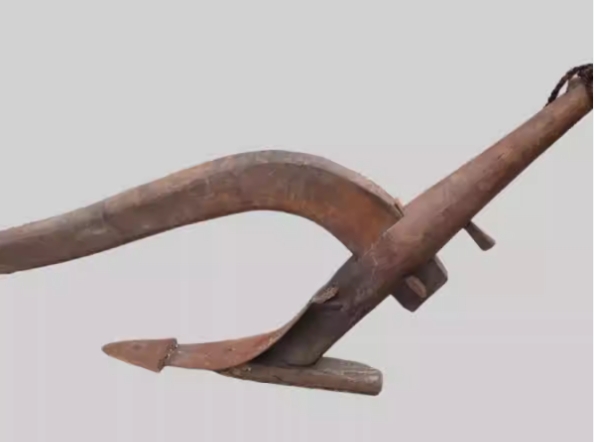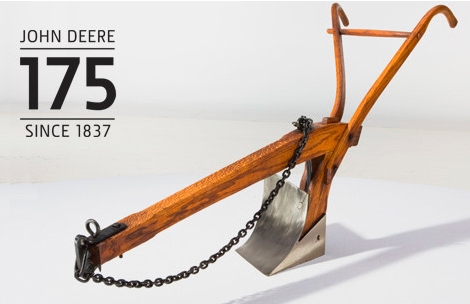Agriculture has undergone multiple transformations throughout history, but few innovations have had as profound an impact as the steel plow. Before its invention, farmers struggled with ineffective wooden and iron plows that couldn’t cut through tough prairie soil. The steel plow’s introduction led to increased productivity, the expansion of agriculture into previously untillable lands, and the modernization of farming equipment.
When Was the Steel Plow Invented?
The steel plow was invented by John Deere in 1837. His design solved the issue of sticky soil clinging to traditional wooden and cast-iron plows, allowing farmers to work more efficiently and expand into new territories. The steel plow is considered one of the key inventions that revolutionized agriculture in the 19th century.
If you’re curious about when the steel plow was invented, the answer lies in 1837. John Deere’s groundbreaking innovation marked the beginning of an agricultural revolution that transformed farming practices forever.
Contents
- 1 Early Plows: From Primitive Tools to Iron Plows
- 2 The Steel Plow Revolution: How John Deere Transformed Agriculture in 1837
- 3 How the Steel Plow Changed Farming in the American Midwest
- 4 From Steel Plow to Modern Tractors: The Evolution of Farming Equipment
- 5 John Deere’s Enduring Legacy in Modern Agriculture
- 6 Environmental Considerations and Modern Farming Practices
- 7 FAQs
Early Plows: From Primitive Tools to Iron Plows
For centuries, early plows were made from wood and, later, iron. These primitive tools were effective in regions with softer soils but struggled in tougher terrains like the American Midwest. Early farmers found it difficult to break through the thick prairie sod, which would stick to wooden and iron plowshares, requiring frequent cleaning and reducing efficiency. The limitations of these tools hindered large-scale farming in many parts of the world, keeping agriculture labor-intensive and less productive.
In fact, before the introduction of steel, it could take a farmer an entire day just to plow a single acre of land. With tough soils making farming impractical in many areas, the need for more durable, efficient plows became increasingly urgent.

The Steel Plow Revolution: How John Deere Transformed Agriculture in 1837
In 1837, John Deere, a blacksmith from Vermont, forever changed the course of agriculture. Deere recognized that the heavy, sticky soils of the Midwest were unsuited to the iron and wooden plows that farmers had been using. His solution? A plow with a polished steel blade.
Steel, unlike iron, was not only stronger but also far smoother, reducing the friction between the blade and the soil. This allowed farmers to cut through dense soil with far less effort, without the soil sticking to the blade. Deere’s steel plow was not only a practical solution, but it also opened up vast areas of land for cultivation that had previously been considered unusable.
Data shows that by the mid-1850s, John Deere was producing over 10,000 steel plows a year, a testament to the tool’s effectiveness and its importance in transforming American agriculture.
How the Steel Plow Changed Farming in the American Midwest
The invention of the steel plow revolutionized farming across the American Midwest. Before the steel plow, farmers were often limited to smaller plots of land, unable to cultivate the rich, fertile soil beneath the tough prairie grass. But with the advent of Deere’s plow, farmers could break through these previously untillable lands, greatly expanding the reach of agriculture.
As a result, agricultural output surged. By the 1860s, millions of acres of previously untouched prairie had been turned into farmland, contributing to the rapid westward expansion of the United States. This boom in farming efficiency helped turn the Midwest into what we now call “America’s Breadbasket.”
Statistical data from the U.S. Department of Agriculture shows that between 1850 and 1880, U.S. agricultural production nearly tripled, a feat largely attributed to technological advances like the steel plow.

From Steel Plow to Modern Tractors: The Evolution of Farming Equipment
John Deere’s invention of the steel plow marked just the beginning of a wave of technological advancements in farming equipment. Over the next century, the steel plow evolved into more sophisticated tools, including multi-blade plows and, eventually, tractor-mounted plows.
The introduction of mechanized tractors in the early 20th century, combined with more advanced plow designs, allowed farmers to cultivate larger areas of land faster and with less physical labor. Today, modern plows, often made from highly specialized materials, can till vast tracts of land in a fraction of the time it took even with Deere’s original steel plow.
John Deere’s Enduring Legacy in Modern Agriculture
John Deere’s steel plow not only revolutionized farming in his own time but also laid the groundwork for Deere & Company to become one of the largest agricultural equipment manufacturers in the world. The company continues to innovate today, offering high-tech solutions that include GPS-guided tractors and autonomous plows, all tracing their origins back to that original steel plow.
Deere’s vision of creating tools that simplify and improve farming is as relevant today as it was in 1837. Modern farmers rely on John Deere’s equipment to increase efficiency, reduce labor, and improve crop yields, all in the spirit of innovation that started with the steel plow.
Environmental Considerations and Modern Farming Practices
While the steel plow revolutionized agriculture, modern farming has faced new challenges, particularly related to soil erosion. Continuous plowing can degrade soil quality, prompting the development of more sustainable practices like no-till farming, which minimizes soil disturbance.
No-till farming allows crops to be planted without plowing, preserving soil structure and reducing erosion. Farmers today balance the use of advanced machinery with environmental sustainability, a trend that reflects the changing priorities in agriculture.
Conclusion: Why the Steel Plow Still Matters Today
The steel plow may seem like a relic of history, but its impact is still felt in modern agriculture. It laid the foundation for the mechanized farming techniques we rely on today and opened up vast tracts of land for cultivation. More than just a tool, the steel plow was a catalyst for agricultural and economic growth. John Deere’s innovation continues to inspire today’s farmers and agricultural engineers to seek new ways to improve efficiency and sustainability in farming practices.
FAQs
After the steel plow, advancements in agricultural equipment included multi-blade plows, mechanized tractors, and eventually GPS-guided and autonomous farming machinery.
The steel plow helped transform the Midwest into one of the most productive agricultural regions in the world. It enabled westward expansion, fueled economic growth, and laid the groundwork for modern farming practices.
The steel plow was important because it allowed farmers to efficiently cut through dense, tough soil without the soil sticking to the blade. This increased productivity and opened up new lands for farming, particularly in the American Midwest.
You can not only choose offline stores, but also consider Minnuo farm machinery, more than 30 years of experience in agricultural machinery manufacturers and exporters, professional sales to give you attentive service!

